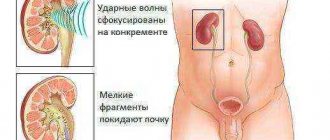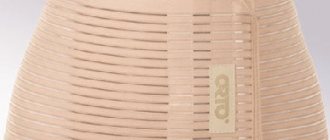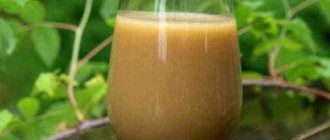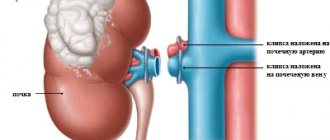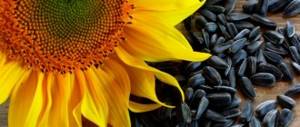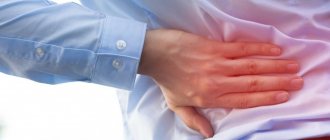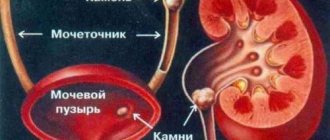Urolithiasis is one of the most common diseases of the urinary system, in which calculi (stones) form in the kidneys and urinary tract. The formation of stones is associated with the crystallization and precipitation of salts contained in the urine. Surgical removal of stones from the renal collecting system in many cases solves the problem only temporarily, since the main reason for their formation lies in metabolic disorders. Therefore, efforts need to be directed not only to recovery after surgery to remove kidney stones, but also to normalizing metabolic processes in order to prevent relapse of the disease.
After removing kidney stones using external shock wave lithotripsy (in simple terms, after crushing the stones), a strict diet is not required. However, it is still better to reconsider the diet and nutrition principles. You should follow a diet that does not create additional stress on your kidneys. Easily digestible foods should predominate in the diet; salty, spicy foods, marinades, canned food, and smoked foods should be excluded. Meat and fish should be steamed and boiled, since fried foods are also not recommended for consumption after removing kidney stones. Foods containing dyes and preservatives, carbonated drinks and, of course, alcohol should be removed from the table. You should not limit the amount of liquid you drink, but you should also not drink more than 1.5 liters of water per day.
If it is impossible to remove kidney stones using the gentle method of lithotripsy, and the patient has undergone abdominal surgery, then a strict diet must be followed in the postoperative period.
On days 1–2 after surgery, the patient is usually prescribed diet No. 0a, which is based on weak secondary meat broths, fruit and berry jelly, jellies and diluted juices, tea with cream, and rosehip decoction. Meals are divided, 7–8 times per meal, food is taken warm, no more than 200–300 g at a time. Dishes with a dense and puree-like consistency, as well as whole milk, are excluded.
From 2–3 days after surgery, patients are transferred to therapeutic diet No. 1 (surgical) with an expanded diet. Warm boiled and steamed dishes in pureed form are consumed as food, meals are split 5-6 times a day.
After surgery, meals should be fractional with a predominance of pureed dishes.
The following products and dishes are recommended:
- low-fat varieties of meat, poultry and fish, it is allowed to eat lean ham, boiled sausages (doctor’s and diet), liver pate, weak meat and fish broths can be used to prepare soups;
- wheat bread (day-old or dried), savory pastries;
- eggs in the form of omelets or soft-boiled;
- dairy products, with the exception of whole milk (sour cream, yogurt, cottage cheese in the form of casseroles and cheesecakes);
- cereals (rice, buckwheat, pureed rolled oats, semolina), small pasta;
- vegetables (potatoes, beets, cauliflower, carrots, green peas, zucchini and pumpkin), vegetable broths for making soups;
- ripe sweet berries and fruits only in the form of jelly, jellies, mousses, mashed purees, baked apples without skin;
- honey, sugar, jam from non-acidic berries and fruits, marshmallows, marshmallows;
- weak tea with cream, rose hip decoction, diluted juices, compotes.
The following products and dishes are excluded:
- rye and fresh white bread, pastries, pies, pancakes;
- meat, poultry and fish of fatty varieties, strong broths, canned food, smoked meats;
- hard-boiled eggs, scrambled eggs, raw egg whites;
- whole milk, high-acid dairy products, sharp and salty cheeses;
- millet, pearl barley, barley cereals, legumes;
- vegetables, with the exception of those listed above, canned vegetables, pickled and pickled vegetables, mushrooms, sour fruits and berries, raw dried fruits;
- hot sauces, spices, marinades;
- chocolate, halva, confectionery;
- coffee, carbonated drinks, kvass, sour berry and fruit juices, alcohol.
On the 5th day after surgery, patients are transferred to therapeutic diet No. 11:
Dishes are allowed to be prepared in any way, but it is still better to abstain from fried foods for now. Food should be taken 4-5 times a day.
It is allowed to eat wheat and rye bread, meat, poultry and fish, eggs, dairy products (preferably fermented milk), any cereals, pasta, any vegetables, fruits and berries, both raw and cooked, tea, cocoa, coffee, fruit juices, rosehip decoction.
Fatty meats and fish, canned food, hot spices, and confectionery products with fatty cream are not recommended.
Proper nutrition for adult women and men
- Food should be either warm or cold.
- The last meal should be no later than 3 hours before bedtime.
- Patients are prohibited from overeating or fasting. The time interval between meals is 3–4 hours.
- You need to eat 4-5 times a day in small portions. This will reduce the load on the gastrointestinal tract and eventually bring your weight back to normal.
- Food must be consumed boiled or baked. Products should be cut into small pieces.
- Patients are advised to drink at least 2 liters of water per day. If you regularly follow this rule, sand will gradually be removed from the kidneys (including small stones that may dissolve).
- The daily salt intake should not exceed 5 g. Its excess contributes to increased blood pressure and the formation of sand and kidney stones. Therefore, in order not to exceed the permissible limit, it is recommended to add salt to ready-made dishes.
Desserts and sweets: what is possible and what is not?
Many people cannot imagine their life without sweets.
What sweets can you eat after surgery to remove kidney stones?
- Apples baked in the oven with honey and cinnamon. This recipe is dietary, low-calorie and at the same time the dish is very tasty. You should select several large apples, cut them in half, and remove the core with the tip of a knife. Place half a teaspoon of honey into the resulting cavity. Place the slices cut side up on a baking sheet lined with parchment. Sprinkle cinnamon on top of apples. Bake at 180 degrees for 15 minutes.
- Jam from non-acidic berries (for example, cherries) is also allowed after removing the stones. The exception is patients with oxalate stones; almost all berries are prohibited for them.
- Fruit salads topped with yogurt can also become a favorite dessert for patients after kidney stones have been removed. Any fruit can be used as ingredients for preparing a salad, including citrus fruits (provided that the patient does not have oxalate stones - oranges and lemons should be excluded for them).
Useful products that dissolve stones
Depending on the nature and chemical structure of the stones, the diet involves a different set of products.
Thus, in the presence of urates in stones, patients are advised to consume milk and dairy products, vegetable salads, freshly squeezed juices, as well as fresh fruits and vegetables.
If the cause of the disease is the formation of phosphate stones, nutrition should be directed in a completely different direction. Recommended products: fish and meat dishes, cereals, chicken eggs and legumes (peas, beans, etc.). At the same time, it is necessary to exclude dairy products, fresh fruits and vegetables from the diet.
Authorized Products
The therapeutic diet for kidney stones should include foods that alkalinize the urine (except in cases where the patient has phosphaturia, and a “shift” to the acidic side is necessary). These include fruits and vegetables, dairy products.
The consumption of foods containing magnesium and B vitamins, which remove oxalates and urates, is indicated. It is necessary to increase in the diet the amount of foods rich in vitamin A, which is important for the regeneration of the epithelium of the mucous membranes of the kidneys and urinary tract.
Low-mineralized waters and decoctions of medicinal herbs have anti-inflammatory properties. The consumption of vegetable oils is increasing as a replacement for animal fat and plant fiber, which prevents the deposition of salts and weight gain, and normalizes intestinal motor function.
The list of permitted products includes:
- bread made from 1st and 2nd grade wholemeal flour or bran (a source of B vitamins);
- fresh vegetable salads;
- soaked and pickled vegetables;
- cereals in moderation;
- pasta in moderation;
- sweet berries and fruits, watermelons, pears, apples, plums, grapes (reduce oxalates);
- potatoes, pumpkin, zucchini, carrots, tomatoes, any other vegetables;
- lean meats and poultry: chicken, turkey, beef;
- low-fat fish: cod, pollock;
- milk, non-sour cottage cheese, fermented milk products;
- mild and unsalted cheeses;
- eggs in any form, limited yolk;
- dried fruits (source of potassium);
- vegetable, dairy, tomato sauces;
- marmalade, honey, pastille, meringues, jam;
- weak tea or coffee with milk or lemon, a decoction of wheat and oat flakes, bearberry, corn silk;
- vegetable oil, butter limited.
What can you eat after surgery to remove stones for effective treatment?
In the postoperative period, the diet should consist of the following products:
- In the first two days after surgery, patients are prescribed liquid food (low-fat meat broths, jelly, jellies, natural diluted juices without sugar, etc.). The volume of each serving should not exceed 300 ml.
- On the third day, pureed soups and porridges, natural liver pates, hard-boiled eggs, slightly dried bread, non-acidic vegetables, berries and fruits (including in the form of jam, juices and jellies), as well as tea with milk and homemade compotes are allowed.
- On the fourth day there are no strict dietary restrictions. You just need to avoid fatty and fried foods.
In the next 1-2 weeks, the diet should still exclude fried and fatty foods.
Therapeutic diet during the recovery period - table No. 5
For a faster recovery after gall bladder surgery, the patient is prescribed a special nutritional system. One of the best among many well-known diets is Dietary Table No. 5. Its main tasks include:
- strict abstinence from consuming prohibited, high-calorie foods;
- stabilization of liver function;
- improvement of bile secretion after gall bladder surgery;
- increasing the bactericidal properties of bile;
- activation of intestinal motor function.
Permitted and prohibited products
When following a diet after surgery to remove the gallbladder, you must consume:
- Cereals. Oatmeal, buckwheat, semolina, and rice porridge are especially useful after surgery. It is recommended to add not only meat, but also dried fruits.
- Meat. Steamed or boiled rabbit, turkey, veal, beef. From meat dishes after surgery, steamed cutlets, meatballs, and meatballs are allowed.
- Fish. A maximum of three times a week, it is allowed to eat boiled or steamed fish of low-fat varieties: pike perch, tuna, hake, pollock.
- Soups. After gall bladder surgery, dairy with pasta, fruit, beetroot, cabbage soup, vegetarian with the addition of cereals, cream soup made from grated vegetables are useful.
- Seafood. It is allowed to eat mussels, shrimp, and oysters in minimal quantities and occasionally.
- Bread. Yesterday's baked rye, first and second grade wheat, with bran.
- Bakery. After surgery on the gallbladder, it is not forbidden to eat biscuits, dry biscuits, and products made from soft dough with fruit filling.
- Vegetables. Allowed in stewed, boiled or raw form: cauliflower, potatoes, beets, Chinese cabbage, zucchini, bell pepper.
- Dairy products. Sour cream (a spoon per day), yogurt, yogurt, low-fat cottage cheese and cheese.
- Berries and fruits. Everything is allowed (except sour) - raw, baked, dried, boiled; Jelly, compotes, soufflé.
- Eggs. It is possible to use omelettes without yolks.
- Sweets. Marshmallows, marmalade, marshmallows.
- Beverages. Fresh fruit juices (except sour ones), tea, jelly, decoction, compote.
Diet after surgery to remove the gallbladder Table No. 5 implies a taboo on:
- Bakery products. Fresh bread, fried pies, baked goods, puff pastries.
- Soups. Okroshka, strong meat, mushroom, and fish broths are prohibited.
- Fish. You cannot eat canned, salted, smoked, or fatty varieties.
- Meat. Fatty pork, duck and goose meat, liver, smoked meats, sausages, kidneys.
- Dairy products. Cream, fermented baked milk, fatty cheese and cottage cheese.
- Porridge. Cereals of the legume family.
- Eggs. Fried, hard boiled, with yolk.
- Vegetables. Radish, spinach, garlic, radish, green onions, mushrooms, marinades.
- Fruits. Sour berries, citrus fruits.
- Sweets. Ice cream, fatty creams, chocolate.
- Beverages. Soda, cocoa, coffee, alcohol.
First two days
After abdominal surgery, a strict diet is necessary. It is similar to that shown when removing stones from the ureters. The composition and volume of food are strictly regulated and depend on the period elapsed after surgical treatment. So, in the first two days, a special diet is required after removal of No. 0a, which is observed for no more than 3 days.
The basis during this period is warm liquid food:
- Meat broths: chicken, turkey;
- decoctions of rose hips, rice with butter, etc.;
- teas;
- natural juices, etc.
- Whole milk;
- soda;
- fatty foods, etc.
The purpose of this regime is to maximize the load on the digestive organs. This is also achieved through:
- Fractional doses: every 2 hours;
- small quantities: no more than 300 g at a time.
The patient should receive approximately:
- 700-800 kcal;
- 15–20 g fat;
- 150 g carbohydrates;
- 5 g proteins.
Drinking for gallstone disease
When following a diet if you have gallstones, it is recommended to drink a large amount of liquid, up to approximately 2 - 2.5 liters. This is done so that it carries out metabolic processes and flushes stones from the body. But drinking, of course, has its own recommendations and restrictions. Allowed to use:
- Clean water;
- Black and green tea, the latter especially contributes to the diuretic effect;
- Natural and freshly squeezed juices from permitted ingredients;
- Special choleretic decoctions.
It is not recommended to drink during treatment:
- Alcoholic drinks;
- Nectars from packages, carbonated and other harmful drinks;
- Coffee;
- Juices squeezed from those products that are prohibited for consumption.
Second and third day
On days 2–3, the person is transferred to a different regimen. Table No. 1 provides a richer menu. It includes pureed foods with low fat content. The volume of proteins and carbohydrates received is also subject to control. Reception - after an equal amount of time, 5-6 times.
- Butter: unsalted butter, refined vegetable;
- soups;
- boiled, baked poultry, fish;
- porridge (with water, milk): semolina, buckwheat, rice;
- vegetables;
- wheat bread, etc.
For now, some types of side dishes (legumes, etc.) and fatty broths are not allowed. The peculiarity of the table is that the last step is milk or cream. The main goal is to prevent irritation of the digestive mucosa.
Causes of stone formation
Why do people develop stones in a healthy gallbladder? Doctors identify the following reasons contributing to their appearance:
- violation of the outflow of bile and its stagnation;
- abuse of animal fats;
- high cholesterol;
- excess body weight;
- liver dysfunction, characterized by decreased production of bile acids;
- violation of the composition of bile;
- sedentary lifestyle;
- various ailments, for example, diabetes, allergies, cirrhosis of the liver, etc.;
- incorrect diet.
Fifth day
The next stage of human adaptation occurs on the fifth day. The menu continues to expand with the transition to therapeutic diet No. 11. You need a large amount of proteins, minerals, vitamins, but a low amount of fats and carbohydrates. During this period, it is especially important to restore immunity. Food helps you recover more actively and includes:
- any first courses;
- all dairy products;
- lean meat, poultry, fish;
- any cereals.
You can cook it in any way, but it is better to exclude fried food. Fatty, spicy, canned foods are not recommended. Reception - 4-5 times a day. It is advisable to consume more:
- raw vegetables;
- cottage cheese;
- cheese;
- bread (rye, wheat).
Nutrition in the early postoperative period
In the early postoperative period, vitamin drinks are useful.
Although laparoscopic surgical techniques have significantly facilitated the rehabilitation of patients, nevertheless, immediately after surgery performed on the gallbladder, a certain stage in nutrition should be followed.
On the first day, patients are advised to fast. Over the next 5–7 days, they are prescribed special surgical diets (No. 0a, No. 1a, No. 1b), their choice is determined by the type and volume of the intervention performed, the severity of the condition, and the presence of complications. These diets correspond to the following therapeutic principles:
- maximum unloading and sparing of the digestive organs (all food is liquid, pureed, semi-liquid or jelly-like);
- include the most easily digestible proteins, carbohydrates, fats (mucous cereal broths, rice water with butter, pureed porridges, protein omelettes, soufflés from fish or meat without tendons, mousses, pureed low-fat cottage cheese, vegetable oils, butter);
- the amount of liquid and vitamins is increased due to strained compotes, liquid berry jelly, rosehip decoction, fruit and berry juices diluted with sweet water, fruit jellies;
- salt is significantly limited (up to 1–5 g per day);
- food can be eaten only in small portions;
- Very cold and very hot foods are prohibited;
- All fatty and stringy varieties of meat, poultry, fish, cabbage soup, borscht, strong broths and decoctions, canned food, dairy products with high acidity and high fat content, millet, legumes, pearl barley, coarse-fiber vegetables, mushrooms, black bread, seeds, nuts are excluded. , spicy and salty snacks, carbonated drinks, black coffee, alcohol.
Since these diets are deficient in the amount of essential nutrients, they are often supplemented with special medicinal mixtures for artificial nutrition (Nutricomp, Peptamen, Clinutren, Nutrizon, Nutridrink, etc.). They are sold freely in many pharmacies and taste similar to milkshakes or diluted powdered milk.
Further mode
According to doctors, repeated treatment is not uncommon. After undergoing abdominal surgery and following all the instructions during the rehabilitation period, people often believe that the danger has passed. A strict diet after ESWL (crushing) is not used at all.
Important. To prevent the disease from appearing again, it is necessary to regulate metabolism and follow a diet.
Usually a person is under the supervision of a specialist for at least another year. You can clarify questions about diet.
Drinking regime is of particular importance. People's needs vary, but approximately 1.5–3 liters of water per day (8–10 glasses) is needed. Moreover, this volume should be evenly distributed over time, and not drunk in a short period. During the night's rest, the body does not receive fluid. Therefore, it is advisable to drink one glass before bed.
It is better to eat foods that are easily digestible. At the same time, doctors advise using the following as little as possible:
- Salty;
- spicy;
- pickled;
- fried;
- smoked;
- canned food;
- with unnatural additives and dyes.
The role of nutrition in the process of stone formation
Statistics show that the majority of patients seen by surgeons for cholelithiasis are overweight, and they also eat spicy, salty, high-calorie foods. All food components, absorbed from the intestines into the blood, pass through the liver cells. Excess cholesterol, protein, and mineral salts enter the bile they produce, it becomes more concentrated, thickens, crystals and sediment fall out. From all this, stones are formed.
Advice:
people who indulge in gluttony and “libations,” as well as leading a sedentary lifestyle, should undergo an ultrasound scan of the liver and gallbladder. There is very likely the presence of sand, which can be cured without requiring surgery.
For urate formations
Each of the removed stones has a specific chemical composition. It definitely needs to be taken into account.
Many people mistakenly believe that mineral water is healthy in any quantity. However, its composition can vary significantly depending on the source. Some types of mineral water are contraindicated for certain types of stones. It is necessary to check with your doctor what kind of water you can drink and how much.
Urate stones are formed due to excess uric acid salts. It is obtained through purine reactions. Therefore, you should limit your consumption of foods rich in these salts and bases. Many unwanted substances contain:
- liver: goose, beef;
- mussels, oysters;
- kidneys, brain;
- legumes;
- sorrel;
- spinach;
- coffee;
- black tea, etc.
It is not worth eliminating them completely, since purine bases are important for the body. On the recommendation of a doctor, some types of mineral water (alkaline) are useful:
How to cook oatmeal porridge with milk?
Oatmeal with milk is an excellent breakfast for patients after surgery. If the stones were phosphate, then milk from plant components should be used.
- Heat 200 ml of milk over low heat, pour 100 grams of oatmeal porridge into a cup.
- Stir, add a spoonful of honey, a pinch of salt.
- After boiling, stir thoroughly again, cover with a lid and let steep for 5-10 minutes.
How to cook oatmeal porridge with milk if you want variety? Well, you should show your imagination. Adding dried fruits, pieces of fruit (from the list of those allowed for a certain type of stone), cinnamon, vanilla will make the dish unusual in taste and aroma.
For phosphate formations
With phosphate stones, the urine is alkaline. You should limit your consumption of foods that are high in phosphorus and calcium. These include:
In recent years, conservative treatment methods have been increasingly used to treat kidney tumors. However, the number of people undergoing surgery is still quite large. For complete and final recovery, as well as for prevention, a proper diet is very important. In combination with other specialist prescriptions, it effectively helps to cope with the disease and prevent its possible occurrence in the future.
What fruits are allowed for diseases of the biliary tract?
Almost all fruits and berries are allowed if there are stones in the body. However, there are several exceptions: oranges, sour apple varieties, plums, gooseberries, cranberries, currants, grapes.
The following fruits are allowed for consumption in unlimited quantities: sweet apples, bananas, melons, watermelons, avocados.
But you should always listen to your body; if after eating any fruit you feel a deterioration in your health, then you should urgently exclude it from your diet.
Types of kidney stones and diet for urolithiasis
In most cases, urolithiasis develops as a result of improper diet. Excessive consumption of spicy and salty foods is a common cause of the formation of sand and kidney stones. It is this kind of food that causes the formation of sediment, which contributes to the formation of stones of various origins and compositions.
The following types of stones can form in the kidneys:
- urate;
- oxalate
- phosphate;
- oxalate-phosphate.
For each of these types of formations, dietary nutrition is selected, aimed at dissolving the stones and removing them from the patient’s body.
Consequences of not following the diet
If you neglect therapeutic nutrition in the case of existing kidney stones, the risk of developing complications such as:
Important! All materials are for reference purposes only and are in no way an alternative to face-to-face consultation with a specialist.
This site uses cookies to identify site visitors: Google analytics, Yandex metrics, Google Adsense. If this is unacceptable to you, please open this page in anonymous mode.
Urolithiasis is a common pathology, occurring in both men and women. In the absence of treatment and compliance with certain nutritional rules, the stones increase in size. As a result, the formations cannot fragment and come out on their own; surgical intervention is required. After the stones have been surgically removed, you should adhere to a certain diet. After removal of kidney stones, there is a high risk of developing infectious processes and the formation of cysts on the body of the organ. It is necessary to strictly follow all the nephrologist’s prescriptions, otherwise the patient’s condition may worsen.
Diet for oscalate, phosphate and urate kidney stones
After surgery, the patient must adhere to the recommendations of the nutritionist
Important! After removing stones by crushing, a particularly strict diet is not required, you should only give preference to foods that are easily digestible, so as not to burden the body and kidneys
Most often, patients should avoid marinades, canned foods, smoked foods, and fried foods. You should categorically avoid food containing dyes, soda and alcohol. It is recommended to reduce the consumption of coffee and tea, but leave the total volume of liquid within 1.5-2 liters per day.
Recipe for a lush diet omelette
After removal of the stones, patients can begin to eat eggs in the form of omelettes or soft-boiled eggs after a week. Try making an airy and tender omelette according to the French recipe:
- Break three raw eggs into a cup (if yolks cannot be eaten, then an omelet should be prepared from whites), add 50 ml of low-fat milk, lightly salt. Beat thoroughly with a whisk until light bubbles appear.
- Grease a non-stick frying pan with a very thin layer of vegetable oil, heat over medium heat, pour the egg mixture onto it, sprinkle pre-prepared chopped herbs or grated cheese on top, immediately close the roof and turn off the heat under the frying pan.
- Leave the omelette covered for 10-12 minutes. This is enough for the omelette to rise without burning the bottom. Much depends on the frying pan: it is optimal if it is thick-walled and retains the maximum heat received. It’s almost impossible to cook a fluffy, tender omelette in a thin-walled frying pan—you’ll have to make do with scrambled eggs.
Phosphate stones in the kidneys: diet for treating the disease
Phosphates in the kidneys are formed due to a violation of the exchange of phosphorus and calcium in the body. Typically, such urolithiasis is a complication against the background of hyperphytaminosis D, excess parathyroid hormone, and renal tubular acidosis. To eliminate this disorder, it is important to reduce calcium excretion by the kidneys.
In the postoperative period, the diet should consist of the following products:
- In the first two days after surgery, patients are prescribed liquid food (low-fat meat broths, jelly, jellies, natural diluted juices without sugar, etc.). The volume of each serving should not exceed 300 ml.
- On the third day, pureed soups and porridges, natural liver pates, hard-boiled eggs, slightly dried bread, non-acidic vegetables, berries and fruits (including in the form of jam, juices and jellies), as well as tea with milk and homemade compotes are allowed.
- On the fourth day there are no strict dietary restrictions. You just need to avoid fatty and fried foods.
In the next 1-2 weeks, the diet should still exclude fried and fatty foods.
When sand appears in the kidneys, the patient should radically reconsider his diet and adjust the menu.
• drink at least three liters of clean water during the day,
• eat unsalted food,
• reduce the amount of meat consumed to a minimum,
• avoid eating various canned foods due to their high salt content,
• enrich your diet with foods containing vitamin A, they can be found in carrots and pumpkin,
• exclude foods containing vitamin C from the diet.
Dietary first courses
Soups are hearty and healthy food. You can significantly diversify your diet if you study recipes for pureed vegetable soups. This is a low-calorie and healthy dish that is quickly absorbed and does not cause exacerbation of chronic kidney diseases.
An important point: patients with oxalate stones are prohibited from adding carrots, spinach, legumes, and zucchini to soups.
A simple recipe for pureed vegetable soup:
- Peel, rinse and chop into cubes three medium-sized potatoes, 100 grams of chicken fillet, one onion, one carrot (if carrots are allowed on the diet - for example, patients with oxalate stones are not allowed to eat them).
- Boil vegetables and pieces of meat in a liter of boiling salted water for 20 minutes.
- Do not drain the broth. When the mixture has cooled, pour it into a blender and beat until smooth.
- Reheat slightly over medium heat. Serve the soup hot and fresh; when reheated after refrigeration, it will no longer be tasty. You can add herbs, wheat bread crackers, and bell pepper rings to taste.
The correct menu for a diet against urates.
Oxalates can be found in the urine of a healthy person, which is considered quite normal if the amount of salts does not exceed the norm - 40 mg. However, an excess amount of these substances indicates the development of urolithiasis. The cause of this pathological process may be the consumption of an increased amount of foods that contain oxalic acid and vitamin C. The disease can also occur against the background of increased absorption of oxalic acid, which is caused by a lack of calcium and vitamin B6.
That is why the diet for oxalate stones in the kidneys requires compliance with the following rules regarding the patient’s diet:
- It is necessary to exclude all foods that are sources of oxalic acid from the diet. The consumption of lettuce, beets, celery, parsley, tea, coffee, chocolate, jelly and jellies is prohibited.
- It is necessary to limit the consumption of carrots, tomatoes, green beans, chicken and beef.
- The diet for oxalate kidney stones prohibits the use of vitamin C as a dietary supplement. It is also important to avoid products in the production process of which ascorbic acid was used as a preservative. You also need to remove foods high in vitamin C from your diet - citrus fruits, currants, rose hips.
- You can eat potatoes, cabbage, pumpkin, pears, bananas, watermelons, all cereals and dairy products. It is better to consume them in the first half of the day.
- When treating urolithiasis with the presence of oxalates in the kidneys, it is necessary to eat foods containing vitamin B6, calcium and magnesium. These substances are present in potatoes, nuts, and whole grains.
- The diet for oxalate kidney stones should include herbal teas to dissolve them. To prepare them, you can use half-palu, madder, birch leaves, and violet roots.
Diet therapy is the main method of treating this urolithiasis. In order for the removal of stones to be successful, it is important to provide the patient with plenty of fluids - you need to drink 2.5 liters of liquid per day. Diuretics have a beneficial effect on the process of clearing kidney stones.
corn silk, mint and golden rod;
dill seeds, knotweed, strawberry leaves;
horsetail, dill seeds, strawberry leaves.
To prepare tea, you need to take a tablespoon of diuretic mixture, pour a glass of boiling water, place in a thermos and leave for 30 minutes. Take warm tea half an hour before meals in the amount of ½ glass three times a day.
Breakfast - apple juice, oatmeal without sugar with dried fruits and butter.
Second breakfast – cottage cheese, a glass of kefir.
Lunch – vegetable soup with any cereal, dried fruit compote with crackers.
Afternoon snack – fruit salad.
Dinner - boiled meat with noodles, cabbage salad, fruit jelly.
Breakfast – carrot juice, buckwheat porridge with milk.
Second breakfast - dried fruit compote, toasted wheat bread.
Lunch – cucumber juice, steamed beef cutlet, carrot and cabbage salad.
Afternoon snack – a glass of green tea without sugar, a slice of toasted bread with butter.
Dinner – vinaigrette without beets, boiled fish, fruit compote.
Diet for kidney stones is one of the important points for the prevention and treatment of this disease. When strictly observed, the following processes occur in the body:
- splitting of kidney stones;
- prevention of the occurrence of small and coarse stones;
- removal of stones from the body along with urine.
This diet also provides for gradual weight loss, improving the breakdown and absorption of nutrients in the intestines and stabilizing the functioning of the heart and blood vessels. According to some observations of doctors, in patients who strictly adhered to these recommendations, the inflammatory process of the urethra, bladder and kidneys decreased.
| Breakfast. | A soft-boiled egg, a glass of tea, apple-carrot pudding with added wheat 150 grams. |
| Snack. | Vegetable salad 200 grams, a glass of rosehip decoction. |
| Dinner. | Vegetable stew, steamed meatballs, a glass of jelly or fruit compote. |
| Snack. | Pear 2 pcs. |
| Dinner. | Bell peppers stuffed with rice and vegetable mixture 200 grams, a glass of mineral water. |
| Snack. | 200 g rosehip decoction |
| Breakfast. | Vinaigrette seasoned with sour cream, a glass of tea with milk, a slice of bread with butter, a portion of cottage cheese. |
| Snack. | Buckwheat with boiled chicken, scrambled eggs from one egg, freshly squeezed fruit juice |
| Dinner. | Vegetarian vegetable soup, seasoned with sour cream, boiled meat, baked potatoes with vegetables, a glass of fruit compote |
| Snack. | Pear 2 pcs. |
| Dinner. | Vegetarian zrazy, pasta casserole with cottage cheese, a glass of fruit jelly. |
| Snack. | A glass of milk |
Diet rules after gallbladder removal
After surgery, it is important to strictly follow the doctor’s instructions and follow a certain diet. The basis of the diet menu consists only of dietary products. Failure to follow nutritional rules can cost a person his life. Please adhere to the following guidelines:
- Reduce your salt intake.
- Limit your fat intake (lard, brisket, fried lamb). Such food is difficult to process in the stomach and puts a lot of stress on the liver.
- Drink plenty of water and juices. Herbal teas, fresh fruit and vegetable teas are useful: cabbage, carrot-apple, pumpkin, carrot-celery. Carbonated water, beetroot and diluted factory juices are contraindicated.
- Drink mineral water only with your doctor's permission. After six months after cholecystectomy and if your doctor allows you to use them in your diet, start drinking mineral water or medicinal herbal teas.
- Take polyunsaturated fatty acids (Omega 3).
- Alcohol and low-alcohol drinks after gall bladder surgery must be completely avoided forever.
- Minimize your intake of foods containing cholesterol. The absence of a gallbladder does not exclude the appearance of stones that form from cholesterol.
- Spicy and smoked foods are taboo (red and black peppers, bitter spices, vinegar).
- Change the way you prepare your meals. To protect yourself from re-formation of gallstones after surgery, boil, bake, or steam food.
- Eat small meals. Divide your food intake into 5-8 times a day. During meals, drink plenty of water and eat small portions of food. With frequent secretion of bile, stagnation is least likely.
- Well-fed people whose weight does not correspond to the norm are recommended to eat food with a minimum of carbohydrates.
- The diet after gall bladder surgery should be balanced, with sufficient minerals and vitamins.
Proper nutrition for adult women and men
- Food should be either warm or cold.
- The last meal should be no later than 3 hours before bedtime.
- Patients are prohibited from overeating or fasting. The time interval between meals is 3–4 hours.
- You need to eat 4-5 times a day in small portions. This will reduce the load on the gastrointestinal tract and eventually bring your weight back to normal.
- Food must be consumed boiled or baked. Products should be cut into small pieces.
- Patients are advised to drink at least 2 liters of water per day. If you regularly follow this rule, sand will gradually be removed from the kidneys (including small stones that may dissolve).
- The daily salt intake should not exceed 5 g. Its excess contributes to increased blood pressure and the formation of sand and kidney stones. Therefore, in order not to exceed the permissible limit, it is recommended to add salt to ready-made dishes.
Attention! The water should be boiled or slightly mineralized. It is also useful to drink herbal infusions and freshly squeezed fruit and vegetable juices diluted (1:1).
What symptoms should you pay attention to?
If you notice the following symptoms, you should visit a nephrologist or at least take a biochemical blood test (particular attention should be paid to creatinine and urea levels):
- the presence of blood in the urine, changes in the amount or consistency of urine excreted;
- periodic dull pain in the lumbar region, usually only on one side;
- presence of sediment in the urine;
- low-grade body temperature of about 37 degrees;
- increased swelling of the limbs and face;
- pain when urinating on one side of the lower abdomen (less often, on both sides at once).
The kidneys are a paired organ whose tissues have few nerve endings. Therefore, they themselves rarely hurt. If pain does appear, then we can talk about an inflammatory process in the tissues (pyelonephritis, glomerulonephritis). If small stones pass on their own, the patient feels a sharp pain in the area of the ureters (lower abdomen), and urine is released painfully and in small portions. If you suspect that a stone is passing, it is better to call an ambulance - independent removal of stones does not always end well.
Depending on your age, lifestyle, and gender, the symptoms of kidney stones may vary slightly. Treatment for women and men is the same. It should be taken into account that the more bad habits a patient has, the more physically tired he is at work, the more pronounced the signs of an incipient pathology may be. In some cases, surgery is the only treatment option. Symptoms of kidney stones in women can worsen during premenstrual syndrome (swelling increases, lower back pain forces you to take painkillers). Men don't have this problem.
Healthy recipes for dieting
A sick person who has undergone surgery needs to enjoy at least some goodies. Therefore, he or his family members will have to learn how to cook healthy dishes. Let's give examples of first, second courses and dessert.
Creamy cauliflower soup with croutons
Ingredients: head of cauliflower, potatoes, oatmeal, low-fat milk, a piece of butter.
Potatoes and cabbage must be boiled and grated. Also boil and grind the oatmeal, then combine with vegetables and add a little salt. Pour in milk, add melted butter. You can beat everything with a blender. Serve with white bread croutons.
Baked fish with vegetables
Choose any lean fish to your taste.
Ingredients: fish, onions, eggplant, carrots, beans, low-fat sour cream.
Cut the vegetables into cubes, grate the carrots. Boil the fish until half cooked. Place vegetables in a silicone mold, then fish. Add a little salt and pepper, coat with sour cream. Bake in the oven until done at 180 degrees.
Cottage cheese casserole
Ingredients: curd mass, honey, chicken egg, semolina, oatmeal cookies.
Grind the cottage cheese with a fork. Beat the egg white with a whisk or mixer, add semolina. Mix thoroughly so that there are no lumps. Add a tablespoon of honey. Combine the resulting mass with cottage cheese. Transfer to a silicone mold and cook in the oven at 100 degrees. You can first sprinkle the mold with crushed oatmeal cookies.
Folk remedies in the treatment of pathology
Recently, it has been recommended to remove the gallbladder only in emergency cases. Using diet, exercise and phototherapy, you can achieve better results and avoid surgery.
First you need to do an ultrasound of the gallbladder, liver and ducts:
- For cholelithiasis and urolithiasis, colitis, gastritis, gout, rheumatism, burdock root is useful.
- Horse sorrel root is used as a choleretic and diuretic.
- A decoction of dill seeds treats cholelithiasis.
- Crushed carrot seeds remove sand from the gallbladder, kidneys, and liver. Taken before meals.
- An infusion of dried elderberry fruits has a choleretic effect.
- Rose hip tea drives bile well: 2 tsp. rose hips for 1 tbsp. boiling water
- Black radish juice has a choleretic effect.
- Choleretic agent. 1 tbsp. pour 1 liter of oats. boiling water and reduce to 1/4. Drink 1 glass 4 times a day.
- Mix fresh juices of carrots, beets, and cucumbers in equal proportions. Drink 1/4 cup, 2 times a day. Helps get rid of stones in a week. Consult your doctor first. This mixture of juices is a wonderful remedy for the gallbladder, liver, prostate and gonads.
Basic rules of the cholelithiasis diet
By eating dietary food, you can create rest for the inflamed organ, regulate its contractions and ensure optimal bile secretion, which is responsible for the normal digestion of food. The diet will greatly help in treating cholelithiasis without surgery, but you need to stick to it for life.
Diet for gallstone disease
If cholelithiasis is diagnosed and gallstones are found in the gallbladder, it is important not only to eat healthy foods, but also to adhere to a diet.
The number of meals should be increased to 5-6 times a day.
You need to eat food in small portions. Fractional nutrition - ensures a good flow of bile, and as a result it does not stagnate in the gallbladder.
Cooking and temperature conditions
First of all, food for cholelithiasis should be fractional and thermally gentle, not cold or hot, it should be warm. Cold and hot foods irritate the mucous membranes and stimulate bile formation. Foods that are difficult to digest should be chopped or pureed and eaten warm.
Salt and liquid
Eat less salt. Salt retains fluid in the body, which contributes to the formation of stones in the gallbladder and kidneys. Daily fluid intake is 1.5-2 liters per day.
Alcohol
The effects of alcohol on the liver can lead to gallbladder problems over time. Because bile is produced in the liver. When the liver fails, bile production also fails. This can lead to gallbladder problems.
These problems are often ignored due to the fact that liver disease itself is life-threatening. Alcohol causes spasms of the gallbladder and bile ducts. Therefore, it is better to stop drinking alcohol.
Food rules
In the presence of gallstones, one of the first recommendations is to switch the patient to proper nutrition. The main task is to provide the body with a sufficient amount of protein, carbohydrates and a limited amount of fat.
In case of gallstones, in terms of nutrition, the following rules must be observed:
- Carbohydrate intake should be 300-350 g, fat - 90 g and protein - 90 g.
- Chew your food thoroughly and slowly.
- Don't overeat. If a person overeats, the gallbladder is forced to contract too much, causing pain and other serious problems. Try to stick to the measure.
- Stick to the cholelithiasis diet.
- The food should be well served and appetizing.
- Meals are eaten in a calm, relaxed atmosphere.
- The calorie content of the daily diet should be 2,000 - 2,500 kcal, which determines the physiological characteristics of the body during this period.
"Honey Spas" from parasites and worms
I used to be like a sleepy fly all the time: my head hurt, I felt weak, I couldn’t sleep in the evening. and wake up in the morning. It’s strange, but my gynecologist advised me to try Honey Spas, suspecting infection with parasites due to constant inflammatory “female-like” ones. I took 2 courses, and now the energy is pouring out of me! And the gynecological problems went away too! Anna, 26 years old, PR manager, Moscow
Read more>>>
Stages of development
GSD is a hereditary disease of the digestive system. The medical name is cholelithiasis. Risk factors are: obesity, metabolic disorders (bilirubin and cholesterol), diabetes mellitus, previous operations on the gastrointestinal tract.
Gallbladder disease has 3 stages:
- Stage I. A condition in which conditions favor the formation of gallstones: thick, heterogeneous bile;
- putty-like bile.
Diseases differ in localization:
- in the bile duct;
- in the gallbladder;
- in the hepatic ducts.
According to the course of the disease, cholelithiasis is divided into without symptoms and with the presence of symptoms:
- dyspeptic form (nausea, vomiting, loss of appetite);
- painful form with attacks of colic;
- under the guise of other diseases.
Based on the presence of complications, cholelithiasis can be classified as: without complications or with complications.
Complex cholelithiasis:
- cholecystitis (acute form);
- choledocholithiasis;
- biliary fistulas;
- stricture scars;
- secondary biliary cirrhosis;
- hydrocele of the gallbladder.
The pathophysiological formation of cholelithiasis is due to a hereditary predisposition to impaired metabolism of the main components of bile, dysfunction of gallbladder motility, inflammation of the gallbladder and the pathways for the release of bile into the duodenum.
Postoperative risks
Take care of your health - save the VKontakte link
The gallbladder is an auxiliary organ of the digestive tract that serves to store bile produced by the liver. As needed, it is released through the bile ducts into the duodenum and serves to digest food. If the formation of bile does not occur properly, then favorable conditions are created in the organ for the formation of calculi (stones).
The following factors contribute to their formation:
- long breaks between meals and an incorrectly composed diet;
- inflammatory processes caused by infectious diseases that affect the biliary tract;
- eating foods with high cholesterol levels, which negatively affects metabolism and contributes to its disruption.
Even after a successful operation, some problems still remain in the body; a person cannot immediately switch to the correct diet. Too much animal fat in food, bad eating habits, excess weight gain - all this leads to the fact that in the very near future stones will begin to form again, but now directly in the ducts that they previously blocked.
The postoperative period is a time of stress for the body, so it is important to follow the nutritional rules prescribed by a specialist
Important: normalizing the digestive process is the best and fastest way to recover after surgery to remove the gallbladder.
The vast majority of people experience the same problems in the postoperative period.
Digestive disorder
The composition of bile has a very concentrated structure; inside the gallbladder, the secretion becomes even more saturated with acids and enzymes. In cases where this organ is removed, there is simply nowhere for bile to accumulate, as a result of which it is released directly from the liver into the duodenum.
This means that when released, its quantity and composition changes. Therefore, the digestive system may simply not be able to cope with large amounts of food, especially if it is saturated with animal fats. The enzymes that make up bile are not able to process them all in a timely manner, so dysfunction of the digestive system occurs. Its consequence is nagging pain in the abdominal cavity, nausea, vomiting and stool disorders. That is why the diet after removal of the gallbladder must be balanced.
Re-formation of stones
The main reason for the formation of stones is a change in the composition of bile, which leads to its stagnation and, as a consequence, other negative consequences. This reason will not disappear even after surgery, so it is extremely important to avoid eating fatty foods, lead a sedentary lifestyle and eat rarely, as this will lead to the formation of new stones in the ducts and the liver itself.
Bloating and flatulence
These unpleasant symptoms often occur in people who have undergone surgery to remove the gallbladder. They appear as a result of the active influence on the mucous membranes of the intestinal microflora, which becomes unfavorable due to the composition of the bile. It ceases to be able to fight various pathogenic microorganisms that initiate the processes of fermentation and putrefaction in the intestines. If you eat “heavy” and fatty foods, then a person will be able to create even more favorable conditions for their development and only worsen his condition.
Bloating is one of the surest signs of problems in the intestines and nearby organs.
